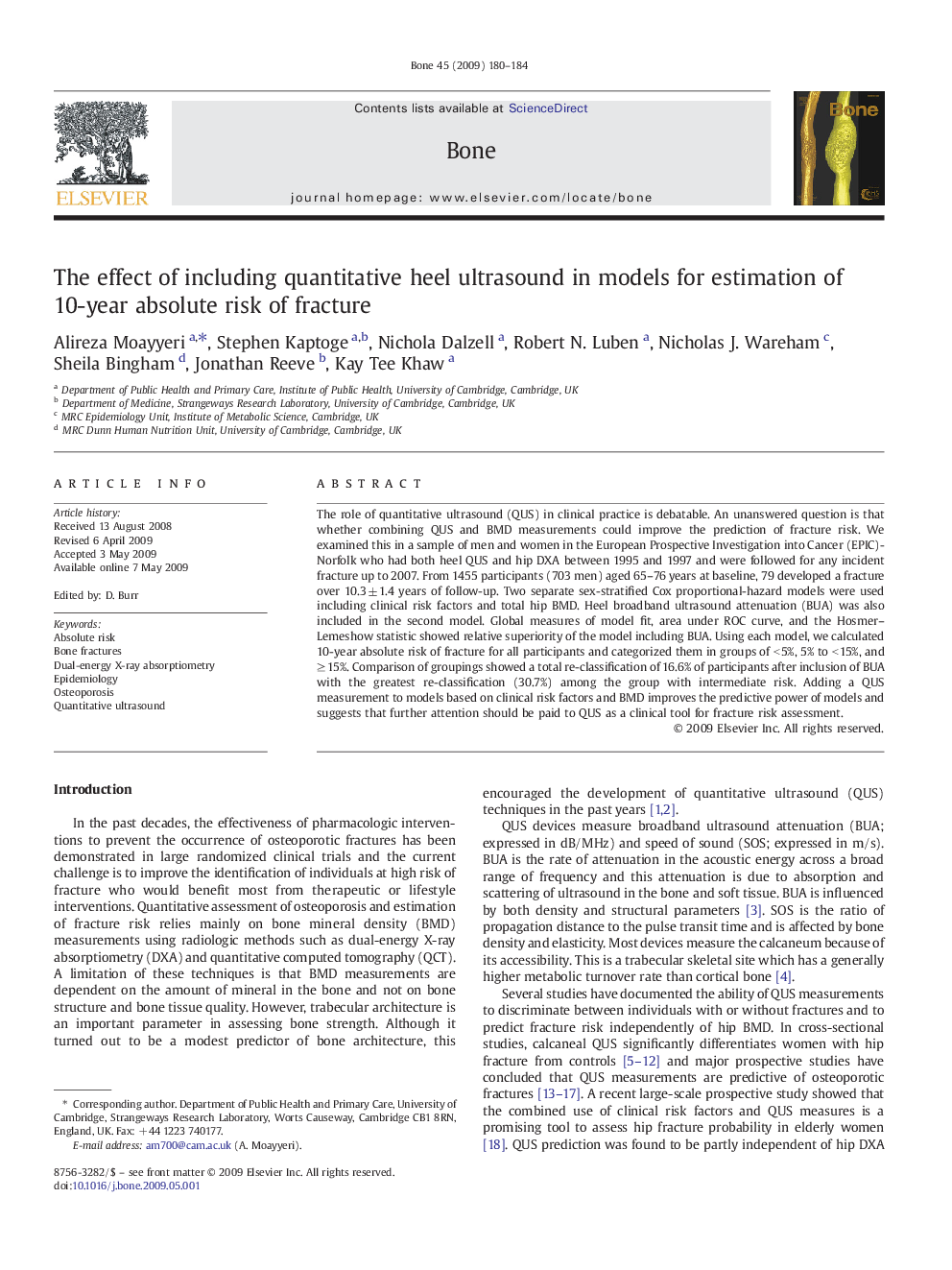| Article ID | Journal | Published Year | Pages | File Type |
|---|---|---|---|---|
| 5892145 | Bone | 2009 | 5 Pages |
Abstract
The role of quantitative ultrasound (QUS) in clinical practice is debatable. An unanswered question is that whether combining QUS and BMD measurements could improve the prediction of fracture risk. We examined this in a sample of men and women in the European Prospective Investigation into Cancer (EPIC)-Norfolk who had both heel QUS and hip DXA between 1995 and 1997 and were followed for any incident fracture up to 2007. From 1455 participants (703 men) aged 65-76 years at baseline, 79 developed a fracture over 10.3 ± 1.4 years of follow-up. Two separate sex-stratified Cox proportional-hazard models were used including clinical risk factors and total hip BMD. Heel broadband ultrasound attenuation (BUA) was also included in the second model. Global measures of model fit, area under ROC curve, and the Hosmer-Lemeshow statistic showed relative superiority of the model including BUA. Using each model, we calculated 10-year absolute risk of fracture for all participants and categorized them in groups of < 5%, 5% to < 15%, and â¥Â 15%. Comparison of groupings showed a total re-classification of 16.6% of participants after inclusion of BUA with the greatest re-classification (30.7%) among the group with intermediate risk. Adding a QUS measurement to models based on clinical risk factors and BMD improves the predictive power of models and suggests that further attention should be paid to QUS as a clinical tool for fracture risk assessment.
Keywords
Related Topics
Life Sciences
Biochemistry, Genetics and Molecular Biology
Developmental Biology
Authors
Alireza Moayyeri, Stephen Kaptoge, Nichola Dalzell, Robert N. Luben, Nicholas J. Wareham, Sheila Bingham, Jonathan Reeve, Kay Tee Khaw,
